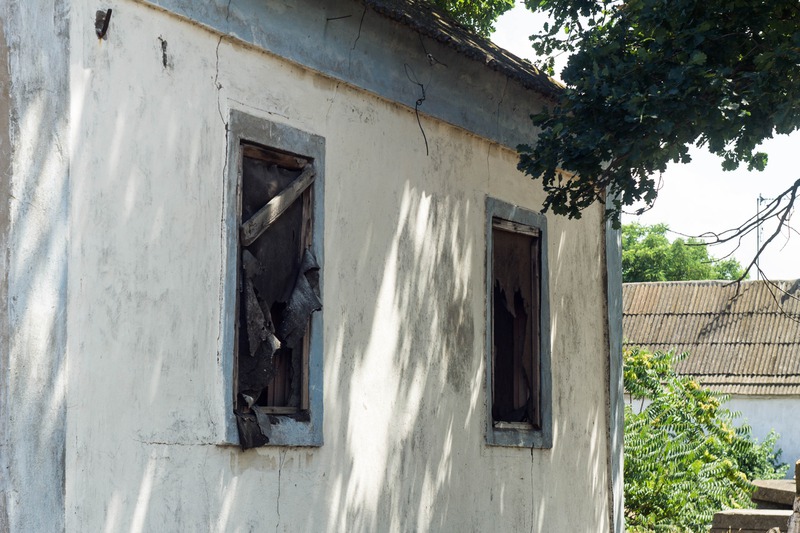Property damage restoration can occur due to floods, fires, storms, and other unexpected incidents. Knowing how long the process typically takes will help home and business owners manage their expectations. Timelines vary considerably depending on the damage type and severity; however, common factors affect how quickly restoration teams can restore a property to a safe and habitable condition.
The General Timeline for Property Damage Restoration
The standard timeline for property damage restoration varies from a few days to several weeks, depending on the extent of the damage and the type of restoration needed. Minor issues like small water leaks can resolve within a few days, while major damages such as floods, fires, or severe storms might require two to six weeks or longer. Specialists assess, cleanup, repair, restore, and ensure your property meets safety standards during that period.
Factor Affecting Restoration Timelines
Several factors determine exactly how long your property restoration will take. One key factor is the degree of damage to components like walls, floors, ceilings, or structural components requiring professional repairs. Other significant aspects include whether personal items require replacement or specialized cleaning techniques, which add to your overall timeline.
Insurance claims processing and scheduling availability significantly impact restoration duration. Property owners dealing with damage restoration must know these factors based on specific circumstances. Each factor contributes uniquely to the time professionals need before the property is safe again.
Restoration Timeline by Damage Type
Water Damage Restoration Timeline
Water damage restoration begins with assessing the source of water leakage or flooding, drying out wet areas, and mitigating further damage. Specialists typically start the process between one to three days following water intrusion detection. The following timeline provides an example walkthrough of water damage restoration:
-
Initial assessment and consultation (Day 1-2)
-
Complete extraction of standing water and moisture removal (Day 2-5)
-
Dehumidification and material drying (Day 3-6)
-
Repairing walls and flooring, painting, reconstruction (1-2 weeks)
-
Property and item restoration completion (Week 3-4)
Fire Damage Restoration Timeline
Fire damage is generally more complex, with specialized cleanup and material removal required. Smoke, soot, and structural integrity issues extend the cleaning process involved. Timelines typically span a longer duration; standard fire damage restoration examples usually resemble this:
-
Property stabilization and temporary housing arrangements (Day 1-2)
-
Assessment of damages, hazardous materials, and smoke presence (Day 2-5)
-
Soot removal, debris cleanup, and smoke odor treatment (Week 1-2)
-
Structural repair and restoration processes begin (Week 2-5)
-
Final inspection approval and return to property (Week 5-6)
Storm Damage Restoration Timelines
Storm damage restoration ranges widely due to varying degrees of severity and cause, including windstorms, hurricanes, tornados, and severe hailstorms. Property damaged by storms is typically restored between three to eight weeks, depending on the number of repairs and the overall nature of losses incurred. Primary considerations in storm damage scenarios involve:
-
Removal and cleanup of fallen trees, branches, or debris (Week 1)
-
Assessment and temporary repairs to roofs, windows, and doors (Week 1-2)
-
Permanent roof and exterior repairs (Week 3-5)
-
Interior repairs such as drywall and flooring fixes (Week 4-7)
-
Completion and inspection of safety standards (Week 7-8)
Mold Restoration and Remediation Timelines
Mold remediation procedures can take no more than one week or extend beyond two weeks based on mold growth severity and area sizes affected. Often requiring a multifaceted procedure, mold damage scenarios involve assessing growth levels and contamination types. Restoration experts contain and remove harmful molds by addressing contributing moisture factors, typically following these steps:
-
Evaluation and identification of mold-contaminated areas (Day 1-2)
-
Containment barriers set to prevent cross-contamination (Day 2-3)
-
Removal of mold-contaminated materials and surfaces (Day 3-5)
-
Cleaning, disinfecting, and dehumidifying air and surfaces (Day 5-7)
-
Follow-up inspections and air quality verification (Day 7-10)
Impact of Insurance Claims on Restoration Timelines
Insurance claim processes significantly impact timelines for property damage restoration procedures. Insurance adjusters analyze damages and estimate restoration costs; meanwhile, property restorers must await claim approvals before starting comprehensive repairs. Delays frequently result from extended negotiation periods, paperwork processing, and scheduling adjuster site evaluations.
Policyholders can reduce potential delays by promptly reporting damages, diligently providing requested documentation, and cooperating fully during inspections and claim procedures. Effective communication with restoration specialists and adjusters can streamline the insurance claim stages and mitigate timeline challenges.
Hiring Professional Restoration Service Benefits
Hiring professionals for property damage restoration processes offers multiple benefits, enabling quicker, safer, and more effective results. Restoration companies have trained technicians, sophisticated industry-grade equipment and materials, and extensive experience addressing various forms of property damage. Employing professionals helps avoid unnecessary risks, failing repair work, or dangerous outcomes from improperly handled restoration processes.
Certified restoration providers offer specific guidelines, critical assessments, and tailored restoration strategies. Working closely with certified restoration professionals ensures comprehensive and effective procedures designed to restore safety and habitability to damaged properties swiftly.
Selecting a Reliable Damage Restoration Provider
Identifying a dependable damage restoration service company equates to achieving successful restoration results. Property owners should select providers who demonstrate substantial experience handling similar damages, maintain positive reviews, and properly hold required industry certifications. High-quality restoration services should contain clear communication, competitive pricing, trusted credentials, and transparent communication.
Some restoration firms specialize exclusively in particular restoration circumstances, including water, mold, or damage from other disasters. Certification and licensed credentials differentiate service providers, ensuring safety regulations and industry-standard achievements incorporated throughout restoration procedures.
Restoring Biohazard and Hazardous Waste Damages
Hazardous waste and biohazard damage restoration processes require specially trained professionals to manage safely, such as biohazard cleanup and disposal specialists. These experts handle dangerous substances carefully and follow strict disposal and sanitation protocols according to industry regulations. Typical hazardous waste situations include crime scenes, chemical spills, sewage backups, and biological contamination.
Each biohazard event receives thorough cleanup and decontamination measures alongside precise waste disposal procedures. Proper equipment, protective clothing, and industry expertise guarantee the safety of all involved throughout this sensitive restoration scenario.
Emergency Restoration Response Companies
Immediate emergency restoration response companies provide critical services during property damage incidents. Typically accessible twenty-four-seven, these responders rapidly assess damage and implement measures to prevent further harm quickly.
For those seeking trustworthy services, websites like puroclean.ca connect you to professionals who minimize potential damage and reduce full-restoration needs. Professional teams use safe equipment and proven strategies, ensuring prompt responses that preserve property integrity and lead to efficient repair timelines.
Final Thoughts
Property damage restoration periods may range considerably according to specific situations, methods utilized, and restoration team expertise. Knowing potential timelines assists property owners when preparing suitable recovery plans, insurance claim proceedings, and managing personal expectations efficiently. Engaging qualified, insured professionals can substantially reduce restoration duration and ensure the property returns to ordinary conditions safely and effectively.

